Last updated: January 27, 2022
Article
Scientist Profile: Stephen Whitaker, Marine Ecologist
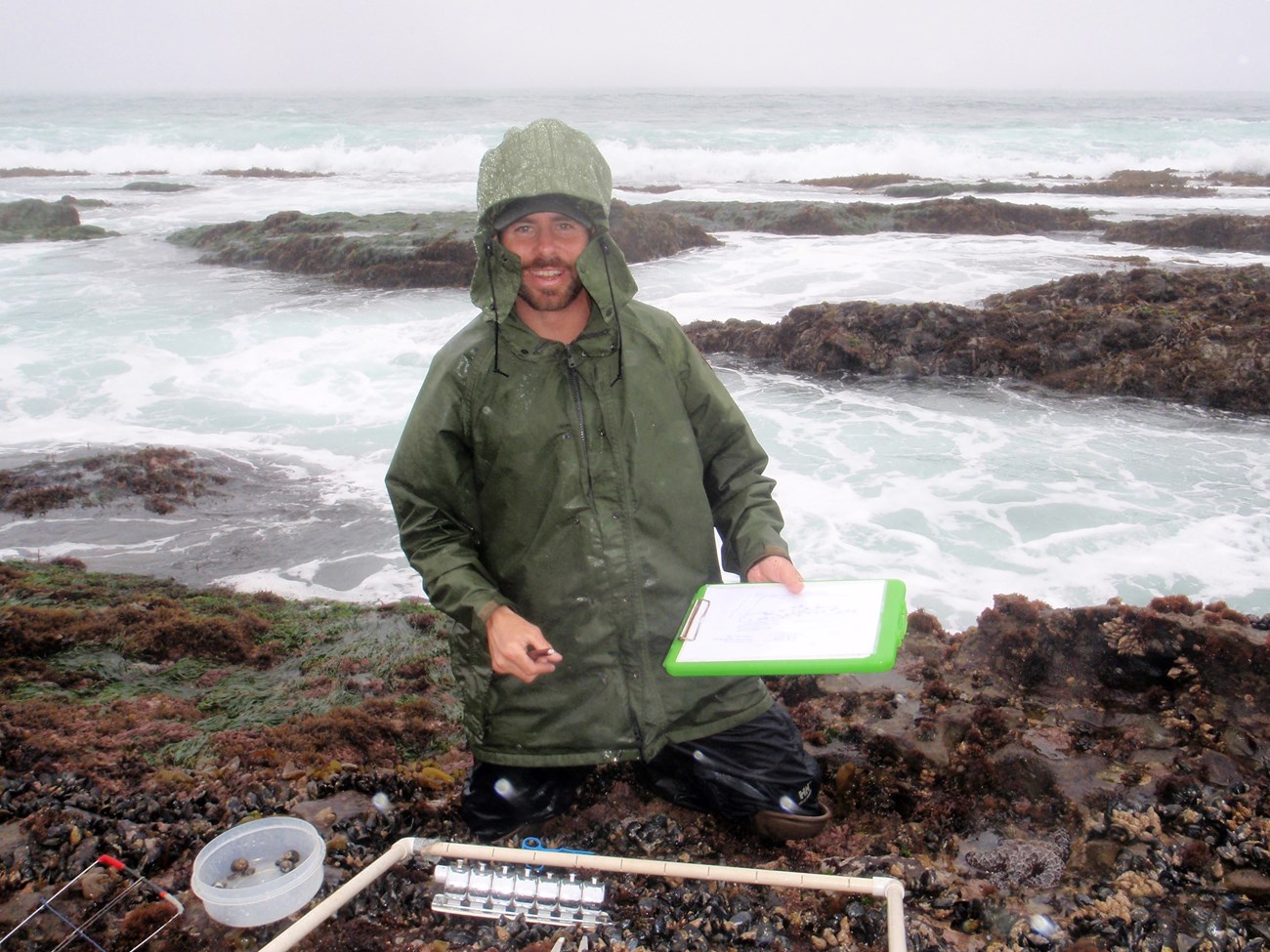
NPS
"I am especially proud to be part of the long-term monitoring history at Channel Islands National Park."
What inspired you to pursue a career in science?
“It’s tough to nail down to one event. But if pressed, I would have to say that spending my childhood living on the waterfront – both fresh and salt – certainly shaped my dreams and ambition to seek a career working in marine environments. I pursued many positions and activities, gaining experience and competency working in and on the water, including lifeguarding, boat maintenance, fishing, crabbing, shrimping, clamming, SCUBA diving, etc."
What was the biggest challenge you had to overcome related to your education/career?
“Challenges faced by nearly all who pursue careers in the marine sciences include fierce competition for employment and relatively low monetary compensation in return. My experience in this field has included healthy doses of both limitations. I spent significant numbers of hours, days, months, even years volunteering my skills for free or low pay in hopes of landing a position that would provide adequate monetary compensation. As an undergraduate, I worked on several university- and state-funded projects related to coastal erosion. Post-graduation, I freely volunteered my time for more than a year as an aquarist at the local aquarium. Afterward, I spent several years instructing marine ecology to K-12 students. I was certainly grateful for these opportunities since each benefitted me in some way. Still, it was undeniably a challenge to survive on a minimal income, and it was clear that I had to continue searching for more viable employment prospects."
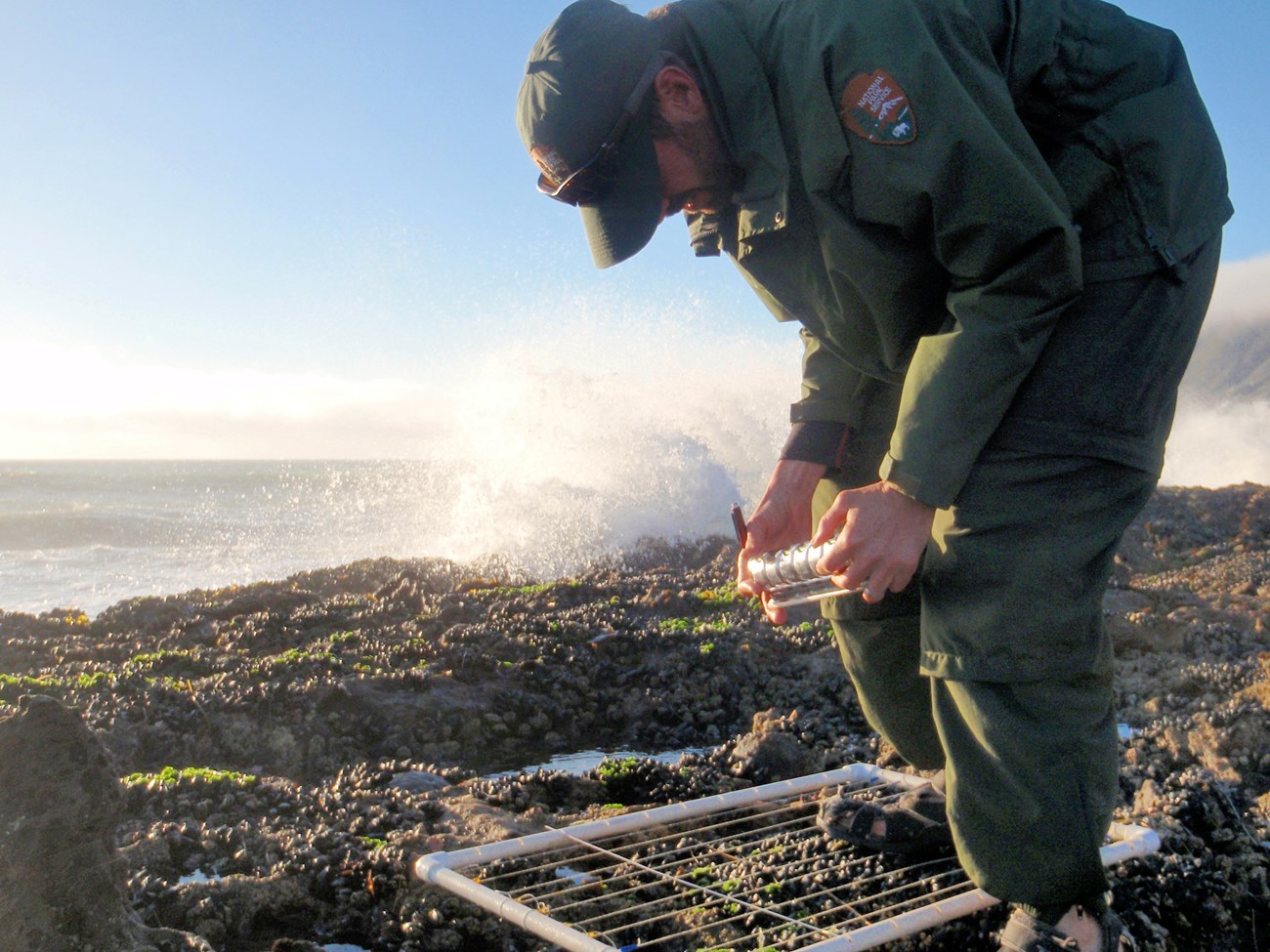
NPS
How would you describe your current role?
“My current position as a marine ecologist for the National Park Service [NPS] is a dream by most accounts! I often tell people when asked, “What do I do,” that I am responsible for assessing the condition of the shoreline habitats in Channel Islands National Park. In reality, my jurisdiction is not limited to the shore as I also spend chunks of time working underwater offshore in kelp forest, eelgrass, and other biogenic habitats in the park. Day-to-day activities can be broken down into two components: field and office work. The field component, for obvious reasons, is the reason I got into this business and takes up roughly 30-40% of my time. Field activities include collecting data on the living resources in rocky intertidal, sand beach, and kelp forest environments as part of an NPS Inventory and Monitoring Program [the Mediterranean Coast Inventory & Monitoring Network]. In support of all three programs, long-term monitoring sites were established decades ago to obtain a scientific representation of the diverse habitats and vital biological signs that exist on the Channel Islands. The remainder of my time is spent working on activities arguably less glamorous but no less critical, including entering and checking the accuracy of data, writing and reviewing reports, manuscripts and proposals, participating in conferences and workshops, and planning for upcoming fieldwork."
What do you love the most about your work? What do you struggle with the most?
“There is much to love about the work I do! Perhaps some of the best moments I can recall include ‘zoning out’ while counting critters inside quadrats both under and above the water. Although repetitive, the experience can be quite soothing once all the planning and daily worries are set aside, and you’re finally out doing the task you were hired to do against a soundtrack of breaking waves and vocalizations from seabirds and pinnipeds.
The issue I struggle with most is likely something that nearly everyone can relate to; lack of time. There never seems to be enough time to accomplish everything. And to compound the problem, some tasks such as writing publications, take enormous amounts of time. For me, it’s a daily concern and challenge to work effectively towards completing an ever-growing list of projects and assignments."
“There is much to love about the work I do! Perhaps some of the best moments I can recall include ‘zoning out’ while counting critters inside quadrats both under and above the water."
What’s an example of a project that you’re especially proud to be a part of?
“I am especially proud to be part of the long-term monitoring history at Channel Islands National Park. Channel Islands was one of four national parks where inventory and monitoring of biological resources were initiated. The NPS Inventory & Monitoring Program today, in many ways, is a product of lessons learned through trials and tribulations at Channel Islands, and I am honored to play a role in ensuring that these programs remain relevant and useful for land managers."
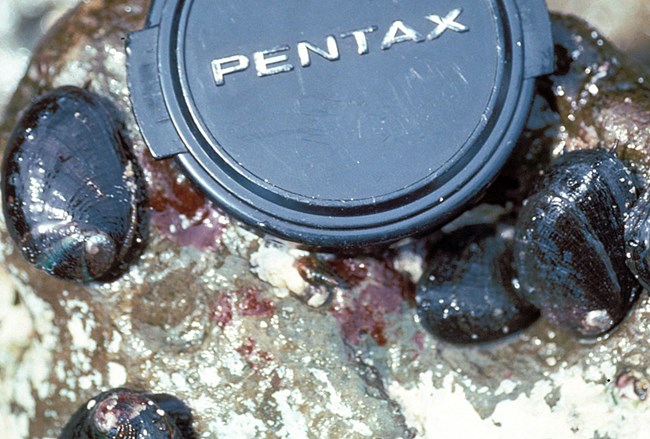
NPS
What’s the most surprising thing about a species that you study?
“Black abalone were once so abundant on the Channel Islands that they occupied more space in the rocky intertidal zone than virtually any other species and were often seen stacked three or four individuals deep as a result. However, beginning in the late 1980s and lasting through the mid-1990s, black abalone at the islands nearly disappeared. The cause of mortality was a disease termed “withering syndrome (WS)” since the foot of the abalone appeared shriveled up when individuals became sick. The particular cause of the disease was later determined to be a pathogen that infected the digestive gland and digestive epithelium of the gastrointestinal tract of afflicted individuals, which impeded digestion. Sickened abalone either starved to death or withered away, leaving them susceptible to predation or losing their grip on the rocks.
In my experience, most people are aware that abalone were once familiar sights in our region, and they have since disappeared. However, I find that many people are pleasantly surprised to learn that black abalone populations at many locations on the islands have greatly improved in recent years. Not only are we beginning to see increased numbers of black abalone, but we are also see other promising signs of recovery such as baby abalone. All of this is occurring even though the agent that causes withering syndrome is still present in the system, which may indicate that black abalone in our region have become more resistant to WS."
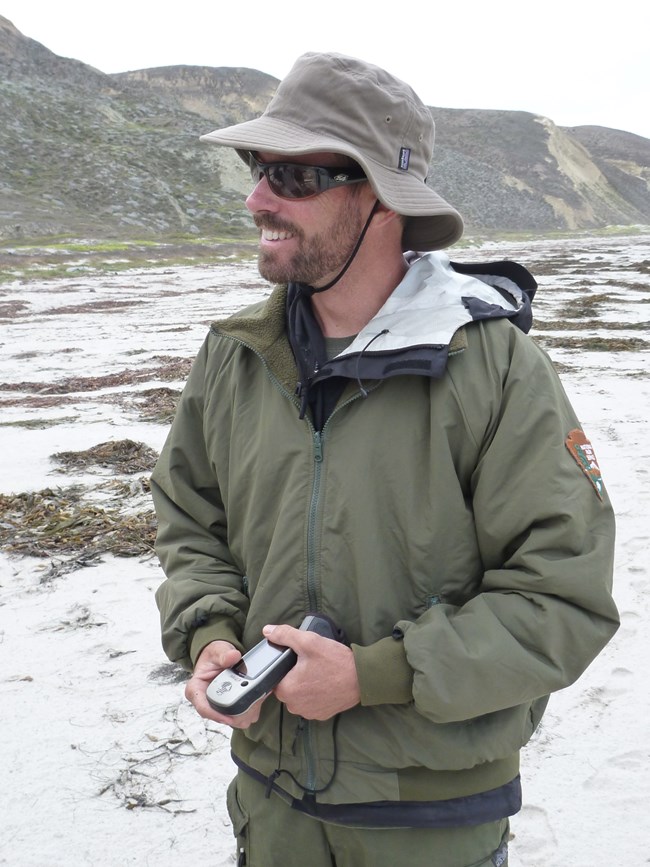
NPS
What advice would you give to someone who wants to pursue a similar career?
“Never give up your dreams, work hard, and try not to burn any bridges – this is a small and tightly-knit field! Additionally, the adage ‘jack of all trades, master of none’ is highly applicable here. A well-rounded scientist is not only competent at collecting data, but also analyzing and communicating the results in both written and oral formats. These activities involve a plethora of skills that take time to develop. Be sure to start early in your career, developing and honing your skills and never stop learning and advancing your skills!"
What’s your favorite thing to do outside of work?
“Currently, my favorite activity outside of work is playing music! Remember what I said about zoning out while scoring plots? The focus required to play an instrument (for me, at least!) is similar to that necessary to count and identify species, and as a result, everything else seems to fade to the background."
If you had a million dollars for your program, how would you spend it?
“One million dollars for the shoreline monitoring programs?! Well, I would invest all or most of those funds into a network of weather stations around the perimeters of the islands to begin documenting spatially-relevant data on wind, relative humidity, solar irradiation, and other variables that have profound effects on shoreline biological communities. The cost and robustness of scientific weather stations have finally become attractive and feasible for small monitoring programs. These data would greatly improve our ability to interpret the meaning of biological data we work so tirelessly to collect."
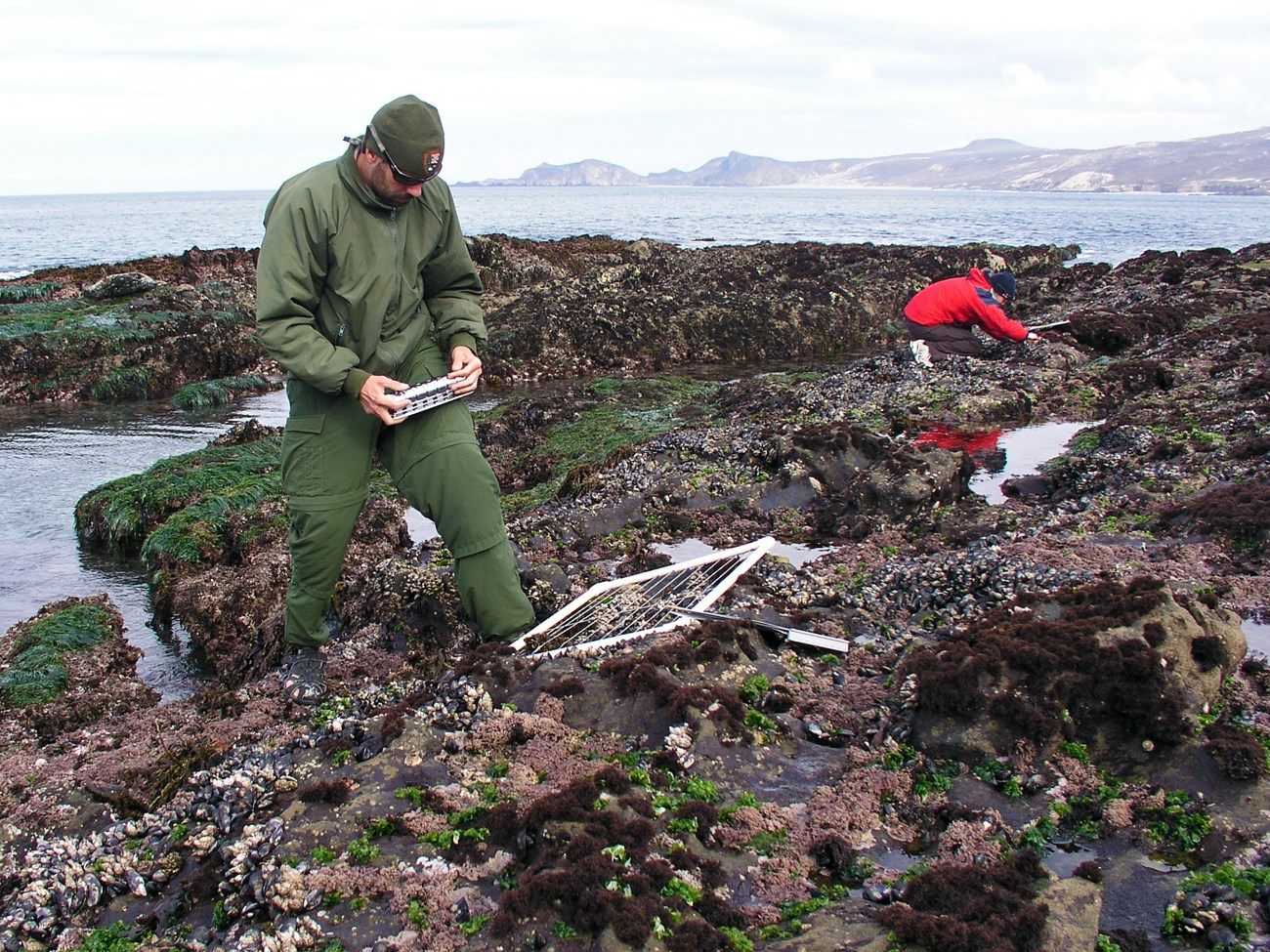
NPS
Is there a species you’ve worked with that you have a particular affinity for?
“Actually, yes, I do pick favorites, even though, as scientists, we should always strive to be as objective as possible! As my colleagues would quickly point out, I hold a special place for rockweed, the “kelp forest” equivalent for rocky shores. Rockweed provides the critical canopy cover in the middle and upper intertidal zones necessary to ease the effects of extreme heat and desiccation during low tide. Unfortunately, rockweed has declined dramatically at the islands, and we are unsure exactly why. However, we know that rockweed populations in other regions have also been declining due to the effects of pollution and climate change, among other anthropogenic stressors. Currently, I am back in graduate school studying the same species of rockweed, Silvetia compressa, that I studied for my master’s thesis. My primary goal is to improve our understanding of why Silvetia populations have declined."
"As my colleagues would quickly point out, I hold a special place for rockweed, the “kelp forest” equivalent for rocky shores."
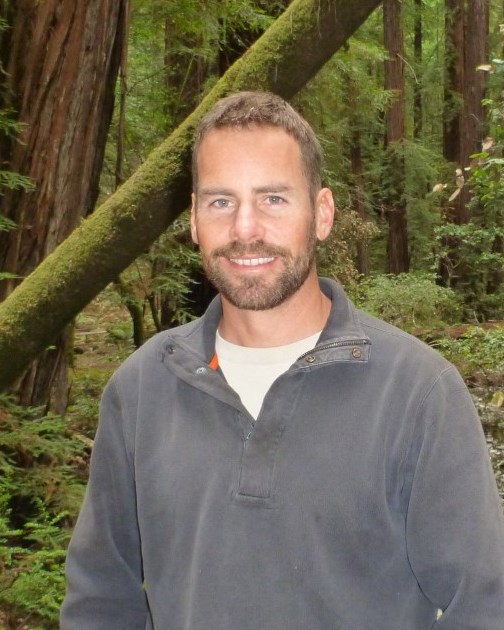
Who is your favorite artist?
“Interesting question! I might have to return to music for this one. Anyone who knows anything about music knows that the mandolin is hands down the most exciting and vital instrument on God’s green Earth. And of course, nobody plays the mandolin like Mr. David Grisman. Enough said."
Learn More
Contact
Selected Publications
Haas, H, Braje, TJ, Edwards, MS, Erlandson, JM, Whitaker, SG. (2019). Black abalone (Haliotis cracherodii) population structure shifts through deep time: Management implications for southern California's northern Channel Islands. Ecology and Evolution, 9: 4720– 4732.
Whitaker, SG, Fong, DR, Neiva, J, Serrão, EA, Anderson, LM, & Raimondi, PT. (2017). Distribution and Genetic Structure of Fucus distichus Linnaeus 1953 (formerly F. gardneri) within Central San Francisco Bay. San Francisco Estuary and Watershed Science, 15(3).
Whitaker, SG, Smith, JR and Murray, SN. (2010). Reestablishment of the Southern California Rocky Intertidal Brown Alga, Silvetia compressa: An Experimental Investigation of Techniques and Abiotic and Biotic Factors That Affect Restoration Success. Restoration Ecology, 18: 18-26.
Related Links
Interview by Jessica Weinberg McClosky and Keith Lombardo, Southern California Research Learning Center.
